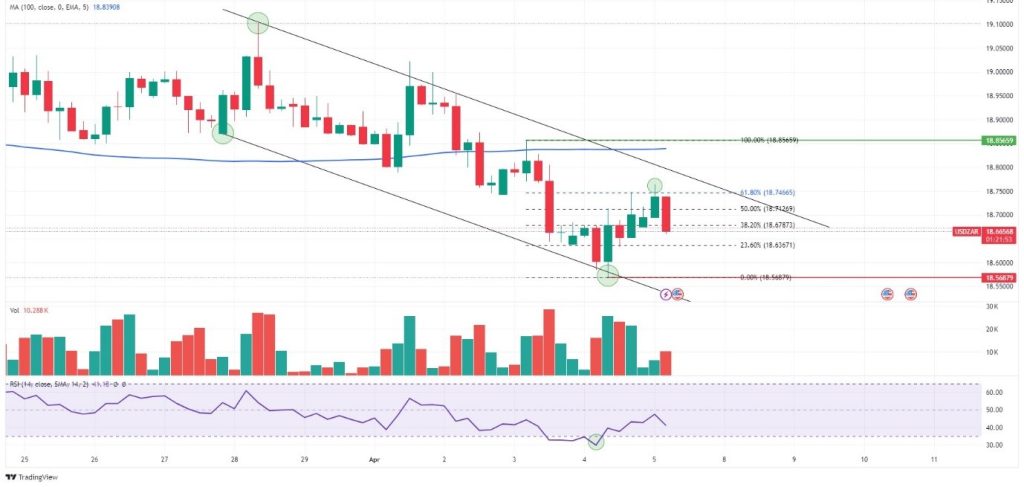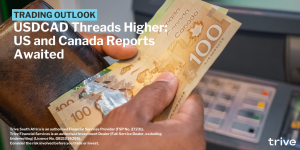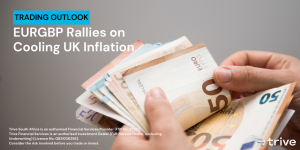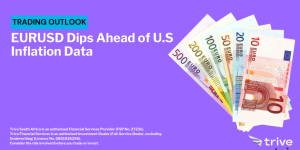
The USDZAR currency pair is currently in a pivotal moment, teetering on its second consecutive week in negative territory with a 1% drop week-to-date.
This trend stems from a multifaceted economic backdrop affecting both the U.S. dollar and the South African rand. In the U.S., recent data indicating an unexpected deceleration in services growth and tempered price inflation has exerted downward pressure on the Dollar. Conversely, South Africa grapples with its own economic challenges, notably evidenced by the S&P Global South Africa Purchasing Managers’ Index plummeting to 48.4 in March, signalling a contraction in private sector activity driven by intensified price pressures impacting consumer demand.
Meanwhile, the decision by the South African Reserve Bank to maintain its interest rates at a fifteen-year high of 8.25% underscores concerns surrounding inflation, which surged to 5.6% in February, edging towards the upper limit of the target range and potentially buoying the Rand. With all eyes set on the upcoming release of the U.S. Nonfarm Payrolls report, poised to influence monetary policy and the short-term trajectory of the USDZAR pair, the interplay between economic indicators and policy decisions holds significant implications for investors and market participants alike.
Technical
The USDZAR price action has been marked by a clear downtrend, with the pair trading below its 100-day moving average and confined within a descending channel pattern.
Recently, a resistance level emerged at 18.85659 after selling pressures ensued following a slight uptick, causing the pair to plummet to the lower boundary of the descending channel. However, amidst oversold RSI conditions, selling pressures subsided, paving the way for buying activity. The pair found support at 18.56879 and rebounded towards the 61.80% Fibonacci Retracement Golden Ratio.
Yet, selling pressures ahead of the London session pushed the pair lower, solidifying the Golden Ratio as a formidable intermediate resistance level. Looking ahead, the trajectory of the USDZAR pair hinges on the interplay between selling pressures and bullish momentum. Sustained downward pressure may lead to a retest of the 18.56879 support level, while a resurgence in bullish sentiment could propel the pair towards a retest of the Golden Ratio.

Summary
In conclusion, the USDZAR pair reflects the South African Rand’s resilience amidst economic challenges, with key technical levels at 18.56879 support and the Golden Ratio as resistance. The upcoming U.S. Nonfarm Payrolls report and market dynamics will continue to shape its trajectory.
Sources: Trading Economics, Reuters, TradingView
Piece Written By Nkosilathi Dube, Trive Financial Market Analyst
Disclaimer: Trive South Africa (Pty) Ltd (hereinafter referred to as “Trive SA”), with registration number 2005/011130/07, is an authorised Financial Services Provider in terms of the Financial Advisory and Intermediary Services Act, 37 of 2002. Trive SA is authorised and regulated by the South African Financial Sector Conduct Authority (FSCA) and holds FSP number 27231. Trive Financial Services Ltd (hereinafter referred to as “Trive MU”) holds an Investment Dealer (Full-Service Dealer, excluding Underwriting) Licence with licence number GB21026295 pursuant to section 29 of the Securities Act 2005, Rule 4 of the Securities Rules 2007, and the Financial Services Rules 2008. Trive MU is authorized and regulated by the Mauritius Financial Services Commission (FSC) and holds Global Business Licence number GB21026295 under Section 72(6) of the Financial Services Act. Trive SA and Trive MU are collectively known and referred to as “Trive Africa”.
Market and economic conditions are subject to sudden change which may have a material impact on the outcome of financial instruments and may not be suitable for all investors. Trive Africa and its employees assume no liability for any loss or damage (direct, indirect, consequential, or inconsequential) that may be suffered. Please consider the risks involved before you trade or invest. All trades on the Trive Africa platform are subject to the legal terms and conditions to which you agree to be bound. Brand Logos are owned by the respective companies and not by Trive Africa. The use of a company’s brand logo does not represent an endorsement of Trive Africa by the company, nor an endorsement of the company by Trive Africa, nor does it necessarily imply any contractual relationship. Images are for illustrative purposes only and past performance is not necessarily an indication of future performance. No services are offered to stateless persons, persons under the age of 18 years, persons and/or residents of sanctioned countries or any other jurisdiction where the distribution of leveraged instruments is prohibited, and citizens of any state or country where it may be against the law of that country to trade with a South African and/or Mauritius based company and/or where the services are not made available by Trive Africa to hold an account with us. In any case, above all, it is your responsibility to avoid contravening any legislation in the country from where you are at the time.
CFDs and other margin products are complex instruments and come with a high risk of losing money rapidly due to leverage. You should consider whether you understand how these products work and whether you can afford to take the high risk of losing your money. Professional clients can lose more than they deposit. See our full Risk Disclosure and Terms of Business for further details. Some or all of the services and products are not offered to citizens or residents of certain jurisdictions where international sanctions or local regulatory requirements restrict or prohibit them.




